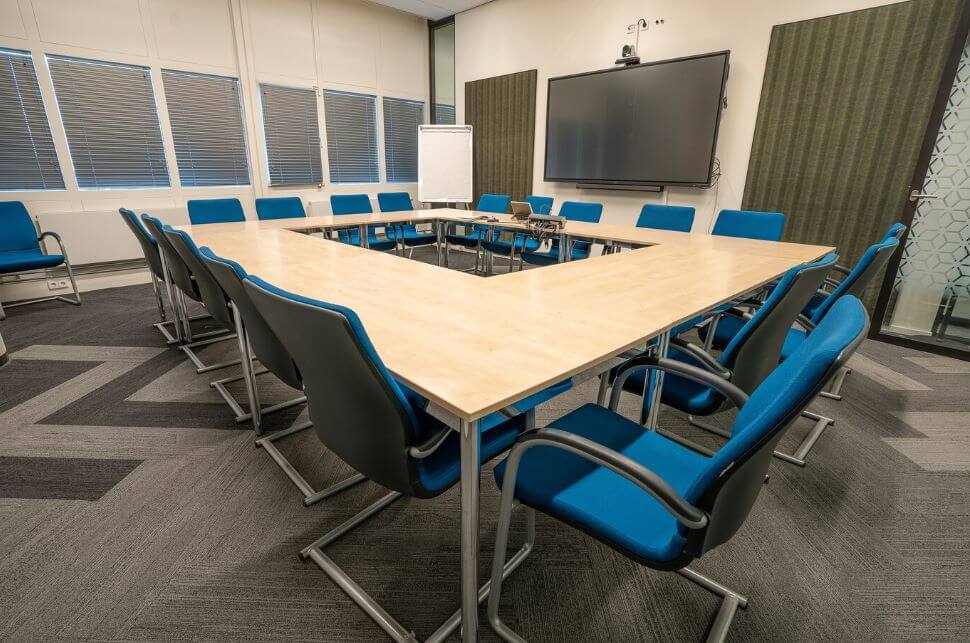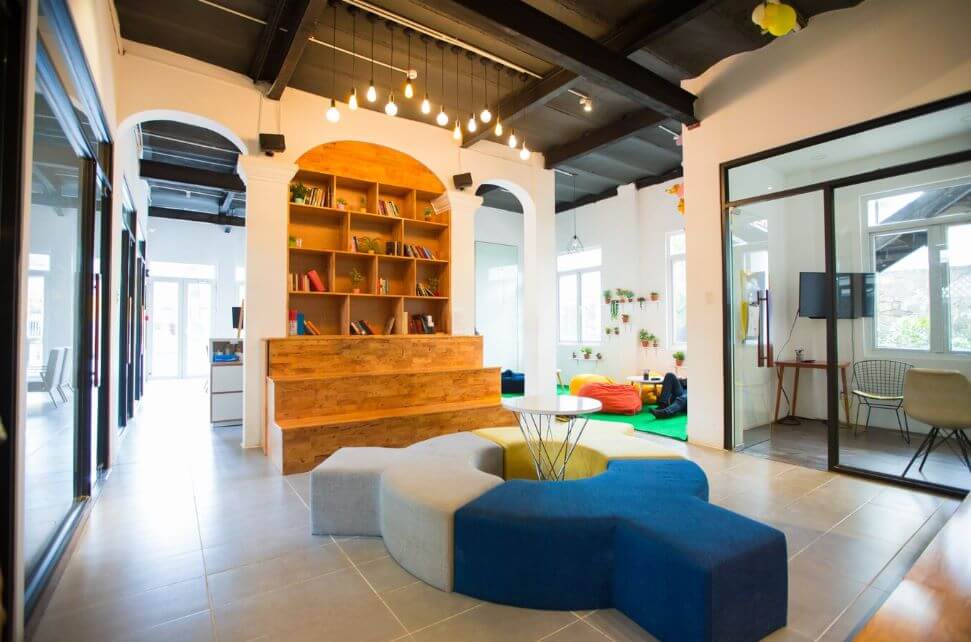Daily time spent in the workplace, whether at a desk, in a meeting, or socialising with coworkers in the break room, may add up to quite a bit. As a result, the places where we work majorly affect our psyches. Office interior design should prioritise ergonomics to ensure workers are both comfortable and productive.
Our ideal workplace can be planned with the help of office fitout specialists. They are knowledgeable in ergonomic designs and products that would work well for your company and can help with issues like poor posture and back pain. Changing the layout and design of your office has been shown to increase efficiency, allowing you to create an environment that is good for your health and that of your coworkers.
An Explanation Of Office Fit-Out
An office fit-out transforms an unfinished building into an operational workplace. It's completely transforming an empty facility into one company that its employees can move into. It entails setting up everything from restrooms and higher floors to conference rooms, breakout spaces, and kitchens. The term "office fit out" refers to converting a space into a fully operational office, complete with air conditioning, desks, water fountains, chairs, audiovisual equipment, and other essentials.
Various Office Fit-Out Types

Fit Outs can range from a fully empty "shell" of a structure to a blank canvas ready to be fitted with glass walls and bespoke kitchens, among other possibilities. Understanding the many fit-outs available will help you complete your job. Below, you'll find a detailed guide on office fit-outs that covers everything from the definition of "office fit-out" to the specific tasks involved.
The term "fit out" is commonly used to refer to outfitting an interior space with all the necessary structural, furniture, electrical, ornamental, and mechanical aspects to be used as an office. As a result, the office is decorated, furnished, and supplied with mechanical and electrical services equipment per the tenant's needs.
Fitting out an office means customising it to meet the needs of the business or individuals working there. There is a significant difference between an office fit-out and a remodel. The process of furnishing a new office space from the ground up.
Organising Your Office Fit-Out
Strategic planning is crucial for successful office refurbishments, as this will help to ensure that the subsequent construction phases go off without a hitch.
Talk About The Nature Of Business.
Consider the company's processes and goals to clearly understand how the redesign will improve your service and the impression you leave on customers.
Think Of The Specialised Workforce.
Think about what your staff wants and needs. If it's a lab, could the researchers benefit from having areas where they may unwind in less harsh lighting after a long day of experimentation? Or, will the company need to allow hot desking and provide acoustic booths for private chats if it promotes flexible working?
Consider The Space Needed.
Think about the layout and lighting of the room, as well as your current and future needs. Does the office require amenities like heating, cooling, and plumbing? Site inspections from the mechanical and electrical services team may help analyse these demands and troubleshoot issues. The company's skilled space planners can examine the team's workflow to inform an effective office layout.
Calculate The Figures.
If you want a cost-effective fit-out that allows you to achieve your business goals, you need to consider both the budget and the timeline. Will there be a long-term financial benefit to implementing energy-efficient features?
Examine The Legal Aspects.
Do any parts of the fit-out necessitate clearances from planning authorities or other regulatory bodies? Professionals are familiar with working with the local government and thoroughly understand current legislation so that they can alleviate your planning concerns.
Fitting Out An Office For A Healthier Environment
Embracing Ergonomic Office Furnishings

The prevalence of workplace injuries, particularly those affecting the back and neck, can be substantially reduced with ergonomic furniture. Ergonomic chairs, for instance, are crafted to ease back discomfort by offering spinal support, promoting good posture. But that's just the beginning:
- Adjustable Desks: Allow individuals to switch between standing and sitting positions.
- Monitor Arms: Ensure screens are at eye level, reducing neck strain.
- Task Lighting: Offers optimal lighting while reading, minimising glare.
- Footrests: Provide support, especially beneficial for those with back issues.
The Magic of Natural Illumination
An increase in natural light has profound effects on productivity, mood, and overall health. Here are compelling reasons to flood your workspace with daylight:
- Sleep Quality: Exposure to natural light improves nighttime rest.
- Mood Elevation: Diminished daylight, particularly in winter, can lead to Seasonal Affective Disorder (SAD).
- Health Benefits: A study from Australia discovered office workers spending most of their day indoors had a higher risk of chronic diseases.
- Boosted Productivity: Natural light exposure has shown to elevate work output.
Integrating Biophilic Elements: Indoor Plants
Plants don’t just purify air; they can also reduce stress and enhance productivity. In a bustling open-plan office, larger indoor trees, which absorb carbon dioxide, can offer pockets of privacy.
Prioritising Ventilation & Air Quality
Optimal Indoor Air Quality (IAQ) is paramount for a thriving workforce. Elevated CO2 levels, stemming from human respiration, are a chief concern in crowded spaces. To tackle IAQ issues:
- Update Filters: This ensures a cleaner airflow.
- Educate Staff: Promote awareness regarding IAQ standards.
- Fans: A solution for spaces without centralised HVAC systems.
Minimising Acoustic Distractions
Unwanted noise can compromise wellbeing and productivity. A solution? Acoustic design. This includes soundproofing and using noise-cancelling solutions to ensure employees aren’t constantly interrupted.
Designing Thoughtful Breakout Spaces
Breakout areas serve as sanctuaries, offering employees moments of respite. From meditation to simply enjoying a book, these spaces promote mindfulness.
Diverse Options: Catering to all employees' preferences ensures everyone has a go-to spot for relaxation.
Wellness Rooms and On-Site Fitness Facilities
Offering wellness rooms can be a game-changer:
- Activity-Friendly: Spaces tailored for workouts, meditation, and more.
- Convenience: Employees don’t have to venture far to engage in physical activity.
Initiating Employee Wellness Schemes
Incorporate wellness programmes that holistically approach employee health, weaving them seamlessly into the office environment.
Refreshment Stations: Healthy Choices
Promote healthy snacking to boost focus and reduce common ailments like sugar crashes. Offering nutritious options can prevent overeating, ensuring sustained energy levels.
Championing Mental Wellbeing
When crafting an office layout, the mental health of the workforce shouldn't be an afterthought. Cultivating a supportive environment can make all the difference, ensuring both physically and mentally sound employees.
By taking the above steps, businesses can create a balanced office environment that prioritises the health and wellbeing of its staff.
The Results Of Inadequate Office Design
Employee lifespan, productivity, and well-being are all directly tied to how healthy an office is. However, the importance of architecture and design in combating burnout should be considered.
Even though most of us have dealt with subpar office architecture (think dingy cubicles, lack of soundproofing, awkward floor plans, and scant air circulation), the consensus is that upgrades are prohibitively expensive and employee output is entirely up to them. However, low energy, fogginess, and diminished mental faculties (at tremendous expense to a business's bottom line) are some of the repercussions of poor air and light quality.
Conclusion
If you improve balance and cut down on bad posture and back pain, an office fitout can make a big difference in your health and well-being. Those who work in office fitout can help you plan the perfect setting, turning an unfinished building into one that can be used. This includes setting up kitchens, bathrooms, meeting rooms, and areas for people to work together. Office fit-outs can be anything from a shell to a clean canvas that can be filled with your own ideas. Knowing about the different kinds of fit-outs can help you get things done and make sure that your workplace is comfy and productive.
If you "fit out" an office, you make changes to it so it works for your business or the people who work there. It includes setting up the building's structure, furniture, electrical, decorative, and mechanical parts so they meet the needs of the tenant. It's important to plan strategically for office renovations, taking into account the type of business, the needs of the specialised staff, the available space, and the budget. The mechanical and electrical services team can look at the site and help figure out what the problems are by analysing these needs. Skilled space planners can also help you figure out how much a fit-out will cost.
Adding features to an office that use less energy can save money in the long run. Legal issues should be looked at to make sure that planning authorities are met. Back and neck strains can be avoided at work by using ergonomic office furniture. A desk that can be adjusted, monitor arms, task lights, and footrests can also be helpful. Natural light can help you sleep better, feel better, and get more done. Having plants inside can help you relax and get more done. High CO2 levels can be a problem in busy places, so good air flow and ventilation are important for keeping workers healthy.
Businesses should keep their filters up to date, teach their employees about IAQ standards, and use fans in rooms that don't have central HVAC systems to improve the indoor air quality (IAQ). Acoustic design can help people feel better and reduce stress. Breakout areas should be well-thought-out and varied, giving people a range of ways to rest. Wellness rooms and on-site gyms can be convenient and good for physical exercise. There should be fitness programmes for employees in the office, and healthy snack stations can help keep people energised. A supportive setting for mental health is important for employees' health, longevity, and productivity.
Bad office design can be expensive and make workers less productive. Bad air and light quality can make people tired, foggy, and less smart, which costs companies a lot of money.
Content Summary
- Discover how office fitouts significantly improve health and well-being.
- Prioritising ergonomics in office design enhances comfort and productivity.
- Consult office fitout specialists for optimal workplace planning.
- Combat poor posture and back pain with ergonomic design solutions.
- Redesigning your office space can boost efficiency and health.
- Office fitouts transform unfinished spaces into functional workplaces.
- Implement vital components, from restrooms to breakout spaces, in fitouts.
- Equip your office with essentials like air conditioning, desks, and AV equipment.
- Differentiate between fitout types, from shell structures to bespoke designs.
- Office fitouts cater to structural, furniture, electrical, and decorative needs.
- Understand the difference between office fitout and remodelling.
- Strategic planning is pivotal for smooth office refurbishments.
- Assess your business's processes and objectives before redesigning.
- Tailor your workspace to the specialised needs of your staff.
- Consider amenities like heating and plumbing in your office design.
- Professional space planners optimise team workflow with efficient layouts.
- Budget wisely for a cost-effective fitout that meets business goals.
- Explore long-term benefits of incorporating energy-efficient features.
- Navigate legalities with professionals knowledgeable in current legislation.
- Use ergonomic furnishings to reduce workplace injuries.
- Embrace chairs designed for spinal support and posture enhancement.
- Employ adjustable desks to alternate between standing and sitting.
- Introduce monitor arms to alleviate neck strain.
- Incorporate task lighting to minimise reading glare.
- Utilise footrests to provide additional back support.
- Natural light improves sleep quality, mood, and productivity.
- Counter Seasonal Affective Disorder (SAD) with adequate daylight.
- Diminished daylight exposure can lead to chronic diseases.
- Integrate indoor plants to purify air, reduce stress, and boost productivity.
- Large indoor trees offer privacy in bustling offices.
- Ensure optimal Indoor Air Quality (IAQ) for a thriving workforce.
- Combat elevated CO2 levels in crowded spaces with updated filters.
- Use fans in spaces without centralised HVAC systems.
- Minimise noise disruptions with effective acoustic design solutions.
- Craft breakout spaces for employee respite and mindfulness.
- Provide diverse breakout options catering to varied employee preferences.
- Introduce wellness rooms for workouts, meditation, and relaxation.
- Offer on-site fitness facilities for added employee convenience.
- Initiate comprehensive employee wellness programmes.
- Stock refreshment stations with healthy snack choices to maintain energy.
- Prioritise mental well-being in your office layout planning.
- A supportive office environment ensures holistic employee well-being.
- Inadequate office design affects lifespan, productivity, and mental health.
- Recognise architecture's role in combating workplace burnout.
- Navigate the pitfalls of poor office architecture, from dingy cubicles to poor airflow.
- Disregarding air and light quality leads to low energy and mental fog.
- Redefining the office environment can transform employee health outcomes.
- Consider the long-term ROI of investing in superior office design.
- A balanced office design prioritises staff health and well-being.
- Re-imagine your workspace as a haven for employee health and productivity.
Frequently Asked Questions About Office Fit-Out
Office fitout brings a major boost in the work output and results in a lower employee turnover rate. You will create a team of happy staff who are more than willing to engage with your branding. Your company can increase productivity and decrease wait times by switching to more ergonomic furniture and storage options.
Office design can have a significant impact on employee well-being. A well-designed office can lead to physical discomfort, stress, and decreased productivity. On the other hand, a well-designed office can promote a positive work environment and improve employee well-being.
When a business has an office space, employees can work in an environment that is free of distractions and allows them to focus on their tasks. This improved focus can increase productivity and ensure that tasks are completed promptly.
Creating a healthy workspace is essential for promoting employee well-being and productivity. Companies can create an environment that fosters wellness and boost performance by incorporating key design elements such as natural light, ergonomic furniture, and flexible spaces.
Some basic comforts include high-quality chairs, clean (and enough) bathrooms, separate spaces for meetings and brainstorming sessions, and a pantry/eating area. Beyond that, a comfortable workspace should provide an aesthetically pleasing space that makes the inhabitants feel good.

